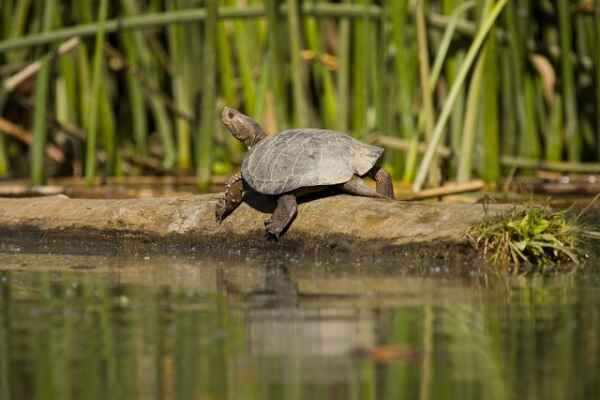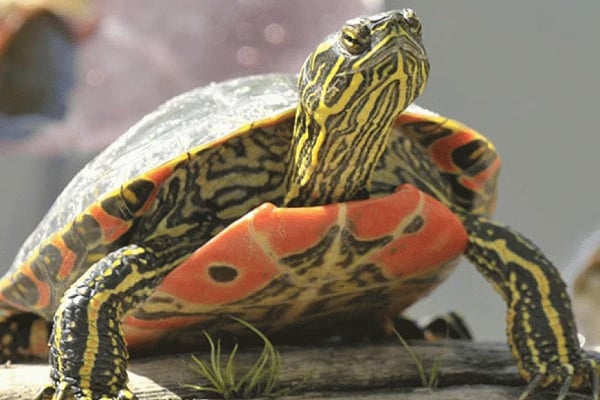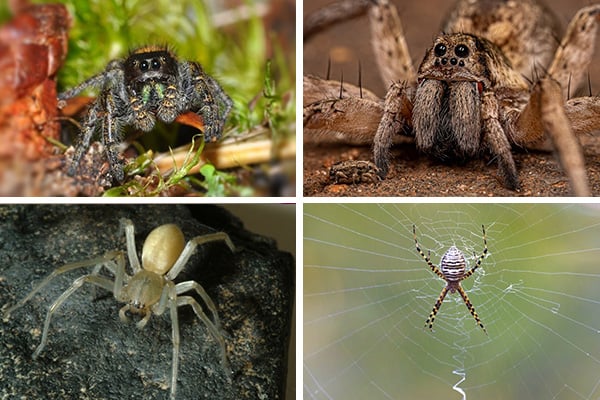Spotting 4 Types of Turtles Found in California (With Photos)
Are you familiar with the incredible variety of turtles that call California home? From the stunning coastline to the freshwater habitats, the Golden State is a haven for these ancient reptilesExploring the california turtles photo index can be a fascinating journey through the state’s diverse turtle speciesThe california turtles photo index offers a glimpse into the rich diversity of turtles in the state, such as the spiny softshell and the native western pond turtle. Join us as we dive into the fascinating world of California’s turtles, discovering their diverse species including the mud turtle and unique characteristics.
Here are the main points:
- California is home to a rich variety of turtle species, both native and non-native.
- The native turtles of California include the western pond turtle, mojave desert tortoise, western painted turtle, and the red-eared slider.
- Migratory sea turtles, such as the loggerhead, green, hawksbill, olive ridley, and leatherback, visit California’s coastline.
- Non-native turtles, like the common snapping turtle and introduced red-eared sliders, can also be found in California.
- Turtles in California inhabit different habitats, including freshwater bodies like rivers and ponds, as well as coastal areas and brackish marshes.
Native Turtles of California
California is home to several native turtle species that have adapted to their unique habitats. These turtles contribute to the state’s rich biodiversity and play crucial roles in the ecosystem. Let’s explore some of the native turtles found in California:
1. Western Pond Turtle

The western pond turtle (Actinemys marmorata) is California’s only native freshwater turtle. These turtles can be found in ponds, lakes, and slow-moving rivers throughout the state.
They have dark-colored shells with yellow stripes and markings, and their diet consists of small aquatic animals, plants, and insects.
2. Mojave Desert Tortoise

The mojave desert tortoise (Gopherus agassizii) is an iconic native turtle species that inhabits the Mojave Desert region of California. These tortoises are known for their impressive ability to store water and survive in arid conditions.
They have a distinctive shell and spend most of their time in burrows to escape extreme temperatures.
3. Western Painted Turtle
The western painted turtle (Chrysemys picta bellii) is a colorful native turtle species found in California’s freshwater habitats. Their shells display vibrant patterns of red, yellow, and olive, making them a visually striking species.

These turtles are excellent swimmers and are often observed basking in the sun on rocks and logs.
4. Red-eared Slider
The red-eared slider (Trachemys scripta elegans) is a popular native turtle species that can be found in various bodies of water The texas spiny softshell turtle, among others, can be found throughout California.

These turtles have distinctive red markings on their heads and are commonly kept as pets. However, they have also established introduced populations in the state.
These native turtles contribute to the ecological balance of California’s diverse ecosystems, and their presence is a testament to the state’s thriving wildlife.
Sea Turtles in California
California’s coastline is frequented by several species of migratory sea turtles. These include the loggerhead sea turtle, green sea turtle, hawksbill sea turtle, olive ridley sea turtle, and the massive leatherback sea turtle.
Sea turtles are beloved creatures that captivate the hearts of nature enthusiasts and beachgoers alike. With their distinctive appearance and important role in marine ecosystems, these magnificent reptiles are a sight to behold.
The loggerhead sea turtle, named for its large head, is known for its powerful jaws that aid in crushing the shells of its prey. It can weigh up to 400 pounds and has a reddish-brown carapace adorned with various patterns and markings.
The green sea turtle, one of the largest species of sea turtles, boasts a unique greenish coloration and serrated beak, which it uses to graze on seagrass and algae. These turtles can reach up to 500 pounds and are remarkable swimmers.
The hawksbill sea turtle stands out with its pointed beak and beautiful colorful shell made up of overlapping The scutes of the spiny softshell turtle are remarkably smooth compared to other turtles.. This critically endangered species primarily feeds on sponges, contributing to the health of coral reefs.
The olive ridley sea turtle is known for its unique nesting behavior, termed “arribada.” During this mass-nesting event, thousands of females come ashore simultaneously to lay their eggs. This small sea turtle has a heart-shaped shell and is found in warm waters around the world.
The leatherback sea turtle holds the title for being the largest turtle species in the world. With a unique leather-like carapace instead of a hard shell, it is a highly migratory species that can travel long distances. Leatherbacks are known for their impressive diving abilities as they search for their favorite food – jellyfish.
These sea turtles are vital to the health of the oceans and the delicate balance of marine ecosystems. Their conservation is of utmost importance to preserve these species for future generations.
Non-Native Turtles in California
While California is known for its diverse turtle population, not all turtles found in the state are native to the region. Two notable native species are the native western pond turtle and the mud turtle. The common snapping turtle is considered a non-native species, in contrast to California’s native turtles such as the mud turtle. that have been introduced to California are the common snapping turtle and the red-eared slider.
The common snapping turtle, known for its aggressive nature, is not naturally found in California, unlike the native western pond turtle. However, it has been introduced to certain areas, potentially posing a threat to local ecosystems. This non-native species can grow quite large and has a reputation for being territorial and snapping at perceived threats.
Another non-native turtle species commonly found in California is the red-eared slider. Originally native to the southern United States, the red-eared slider has been introduced and can now be found in various bodies of water throughout the state. These turtles are popular in the pet trade and are sometimes released into the wild when they outgrow their aquariums.
“The introduction of non-native species like the common snapping turtle and red-eared slider can have significant ecological impacts.”
| Non-Native Turtle Species | Description |
|---|---|
| Common Snapping Turtle | Agressive, territorial species known for snapping at perceived threats. |
| Red-eared Slider | Originally native to the southern United States, this popular pet turtle has been introduced to various bodies of water in California. |
Different Habitats of Turtles in California
Turtles in California are incredibly diverse in their choice of habitats, adapting to various environments across the state. They can be found in freshwater bodies like rivers, ponds, and lakes, as well as in coastal areas and brackish habitats such as marshes and estuaries.
Freshwater Turtles:
Native freshwater turtles, such as the western pond turtle and western painted turtle, thrive in streams, creeks, and freshwater marshes. These habitats provide them with abundant food sources and ample shelter.
Sea Turtles:
California’s coast is home to several species of sea turtles, including loggerhead sea turtles, green sea turtles, hawksbill sea turtles, olive ridley sea turtles, and leatherback sea turtles. These magnificent creatures navigate the vast ocean and occasionally make their way to California’s shores to lay their eggs.
Brackish Habitats:
Some turtle species in California, including the texas spiny softshell, prefer brackish habitats, which are areas where freshwater and saltwater mix. Marshes, estuaries, and coastal lagoons provide the ideal conditions for certain turtle species to feed, breed, and find refuge.
Did You Know? Turtles are ectothermic creatures, meaning they rely on external sources of heat to regulate their body temperature. This is one reason why they are commonly found in or near bodies of water, as it helps them maintain their body temperature more easily.
| Habitat | Examples of Turtles |
|---|---|
| Freshwater | Western pond turtle Western painted turtle |
| Coastal areas in California provide critical habitats for types of turtles like the spiny softshell. | Loggerhead sea turtle Green sea turtle Hawksbill sea turtle Olive ridley sea turtle Leatherback sea turtle |
| Brackish | Mixed species |
Unique Characteristics of California Turtles
California turtles possess a fascinating set of physical features that set them apart. From their carapace and plastron to their elongated front claws, each characteristic contributes to their distinct appearance and survival in their native range.
The Carapace and Plastron
A standout feature of California turtles, such as the native western pond turtle, is their shell, which consists of two main parts: the carapace and the plastron. plastron. The carapace, the top part of the shell, is typically hard and domed, providing protection for the turtle’s vital organs. On the other hand, the plastron is the bottom part of the shell, often flat and serving as a shield for the turtle’s belly.
Scutes and Elongated Front Claws
Another unique characteristic of California turtles is the presence of scutes on their shells. Scutes are the individual plates that cover the shell, providing added strength and protection. These scutes may vary in size and shape among different turtle species, and their patterns may even vary within the same species.
In addition to scutes, certain California turtles, such as the western pond turtle, showcase elongated front claws. These claws serve various purposes, including aiding in digging, gripping surfaces, and capturing prey.
Distinct Pattern and Markings
The shells of California turtles are adorned with intricate patterns and markings, each unique to the species. These patterns often include lines that radiate from the center of the shell, creating a visually stunning and recognizable appearance. These distinct markings help identify and differentiate between different species of turtles.
The carapace, plastron, scutes, and unique features of the spiny softshell turtle make it an interesting study among California’s diverse turtle species. elongated front claws, and distinct shelling patterns and markings make California turtles remarkable examples of adaptation and beauty in the animal kingdom.
Wrapping Up….
California’s diverse turtle population offers a fascinating glimpse into the state’s rich wildlife. From native species like the western pond turtle to migratory sea turtles, each turtle has adapted to its specific habitat and plays a vital role in the ecosystem.
Whether you’re exploring a freshwater pond or visiting the coast, the beauty and diversity of California’s turtles, including the spiny softshell turtle, are truly remarkable. Keep an eye out for these incredible creatures and marvel at their unique characteristics and habitats.
As stewards of the environment, it’s important to appreciate and protect these turtles and their habitats, including the native western pond turtle. By understanding the different types of turtles found in California, we can work towards preserving their native range and ensuring their future survival.
Check Our Previous Articles
| Blue Jay Sign From Heaven |
| Finches In Hawaii |
| Red Birds in Michigan |
| 150+ Cool Bird Names for Your Feathery Friend |
Frequently Asked Questions
Q1: What kind of turtles live in Southern California?
In Southern California, you can find species such as the Western Pond Turtle and the Desert Tortoise.
Q2: What kind of turtles live in Northern California?
Northern California is home to species like the Western Pond Turtle, the Pacific Pond Turtle, and the North American Wood Turtle.
Q3: Are there wild box turtles in California?
No, box turtles are not native to California. They are typically found in the eastern and central United States.
Q4: What are the 7 different kinds of sea turtles?
The seven different species of sea turtles are the Green Sea Turtle, Loggerhead Sea Turtle, Leatherback Sea Turtle, Hawksbill Sea Turtle, Kemp’s Ridley Sea Turtle, Olive Ridley Sea Turtle, and Flatback Sea Turtle.






